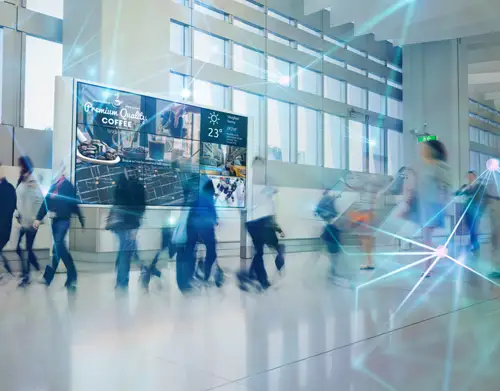Digital Signage for Workplace Safety and Emergency Communication
Digital signage strengthens workplace safety. It delivers instant alerts, shares daily safety reminders, and helps teams respond faster during emergencies. When used well, digital displays become a trusted channel for protecting employees and minimizing risk.
Make safety communication clear and consistent
Clarity saves time and reduces mistakes.
Use simple, direct language
Keep safety messages short and easy to read at a glance. Say “Wear safety glasses in Zone 3” instead of “Please remember to wear safety glasses when entering Zone 3.” Clear language ensures faster comprehension.
Standardize visual design
Use consistent colors and icons for safety notices, warnings, and alerts. Green for safe, yellow for caution, and red for danger. Consistent visuals help employees recognize critical information instantly.
Share daily safety reminders
Small reminders keep safety top of mind.
Rotate key reminders
Display reminders for PPE, hygiene, or ergonomic practices. Rotate messages weekly to avoid fatigue. This steady cadence builds safer habits over time.
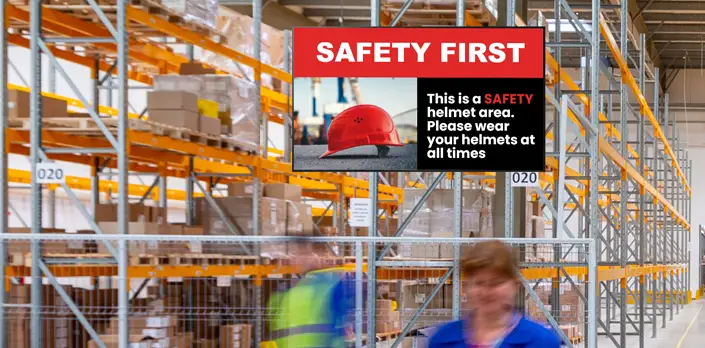
Include site-specific safety tips
Tailor messages to the environment. A warehouse may highlight forklift safety, while an office may share evacuation routes. Local relevance makes reminders more useful.
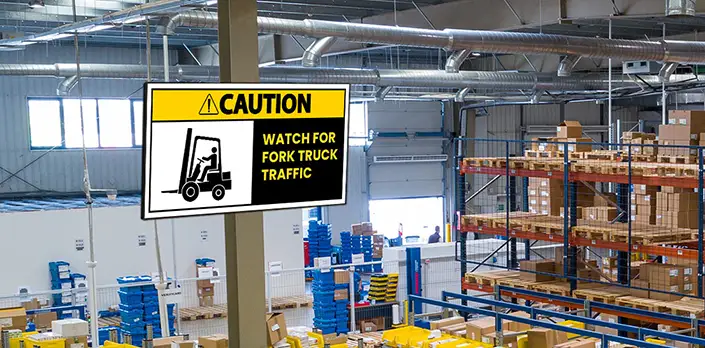
Deliver real-time emergency alerts
Speed and accuracy matter in emergencies.
Automate urgent notifications
Connect your signage system to weather alerts, building management systems, or internal safety platforms. This automation pushes critical alerts to every screen in seconds, reducing response time.
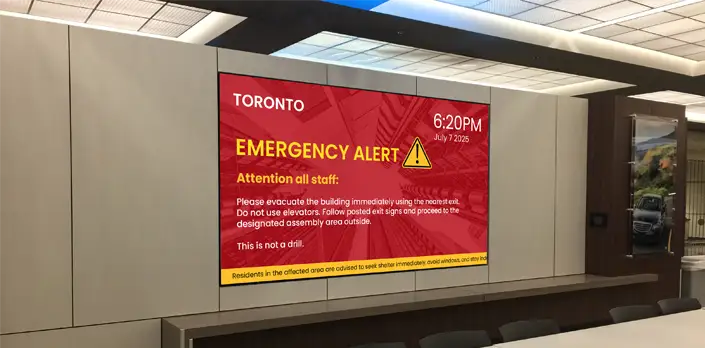
Automate where possible
Connect your signage to real-time feeds for weather alerts, production dashboards, or emergency notices. Automated updates reduce manual work and keep your content relevant at all times.
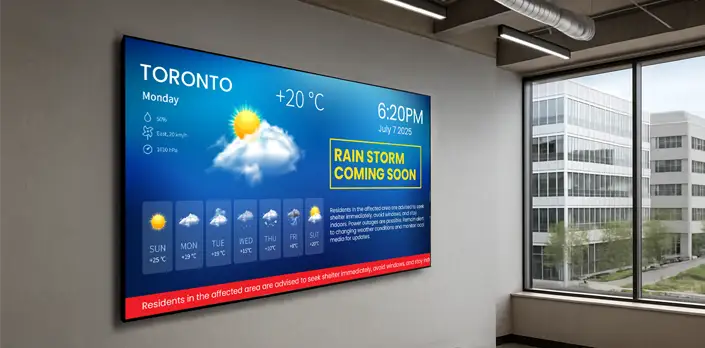
Support drills and preparedness
Prepared employees respond better under pressure.
Announce drills in advance
Use digital screens to notify employees of scheduled drills. Clear, timely notices ensure high participation and reduce confusion.
Provide step-by-step instructions during drills
During a drill, display location-specific instructions. Showing evacuation maps or assembly points on screens reinforces the correct response in real conditions.
Reinforce compliance and safety culture
Regular safety messaging builds a stronger safety culture.
Highlight training opportunities
Promote training sessions or refresher courses. Include QR codes for quick sign-ups. Increased participation keeps safety knowledge current.
Recognize safe behavior
Celebrate teams or employees who meet safety goals. Recognition motivates others and positions safety as a shared responsibility.
Measure effectiveness
Tracking results keeps safety communication sharp.
Track acknowledgment and action
Use QR scans or short links to measure how many employees read and acted on safety messages. Compare these numbers to incident rates to gauge impact.
Gather feedback
Ask managers and employees if screens are clear and helpful. Feedback helps you adjust timing, placement, or message design to make alerts more effective.
Integrate with other communication channels
Digital signage works best as part of a broader system.
Pair screens with email or SMS
Send detailed instructions via email or SMS while using screens for quick, visual alerts. This layered approach ensures coverage and clarity.
Maintain consistent messaging
Align tone and visuals across every channel. Consistency builds trust and reduces confusion during emergencies.
Keep screens operational and reliable
Reliability is critical in safety communication.
Monitor device health
Use your CMS to track device uptime and playlist delivery. Offline screens are a safety risk. Automated alerts for device failures ensure issues are fixed fast.
Schedule regular maintenance
Check displays, mounts, and network connections on a set schedule. Preventive maintenance reduces downtime and keeps your system ready for any event.
Common pitfalls to avoid
Avoid errors that weaken your safety communication.
Overloading screens
Too much content confuses employees. Limit safety screens to one clear message at a time.
Ignoring testing
Run regular tests to confirm alerts display correctly. Test templates, automation, and visibility in every location.
Poor placement
Place screens where employees will see them immediately during emergencies, such as exits, main corridors, and production areas.



